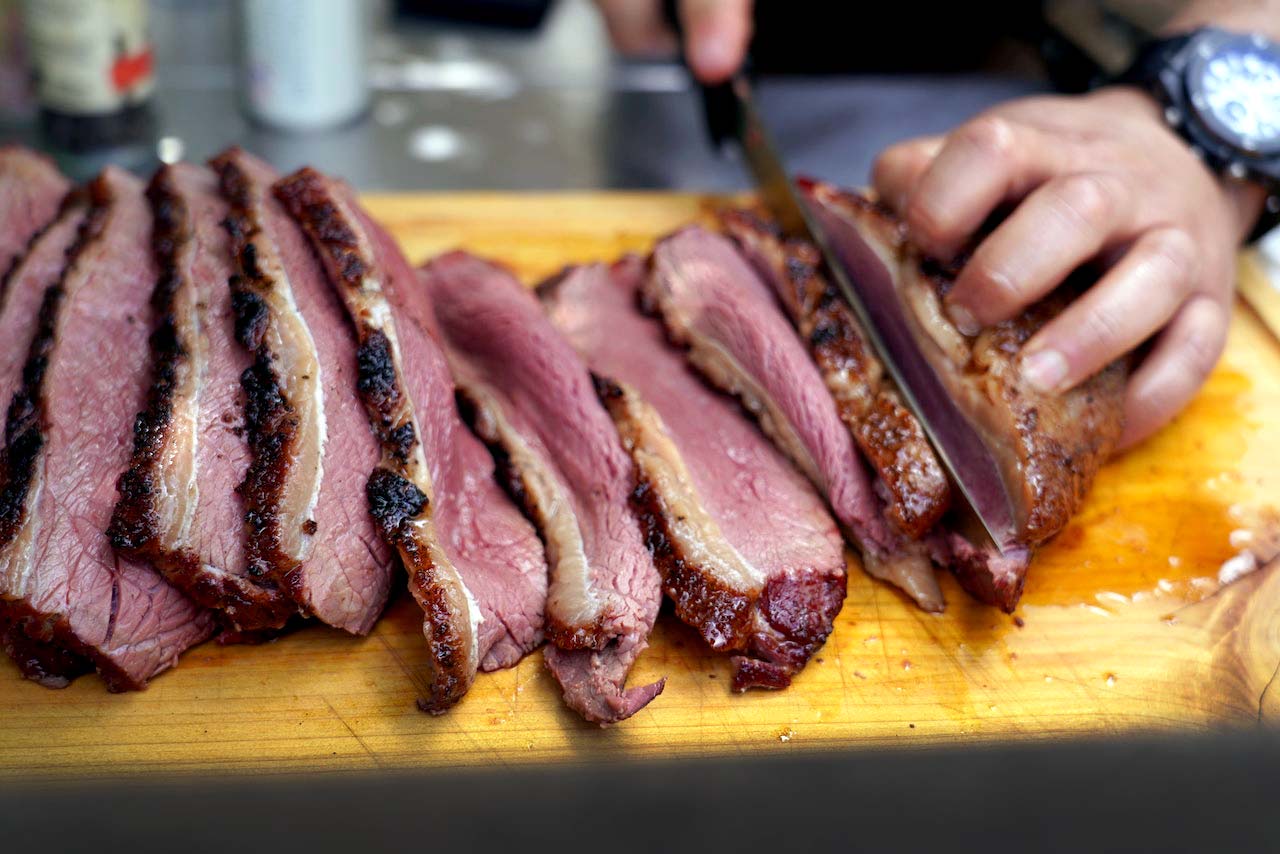Today, we’re fixing to tackle a question that’s been on the minds of many a BBQ lover: can brisket be pink? If you’re like most folks, you’ve probably been taught that meat should always be cooked until it’s brown or gray all the way through, and that pink meat is a sure sign of undercooking.
But when it comes to brisket, things ain’t always so cut and dried.
You see, brisket is a tough cut of meat that requires a whole lot of cooking to become tender and delicious. And that cooking ought to take place low and slow, for hours on end, until it’s fall-apart tender. But even after all that cooking, you might still end up with a pinkish hue in the meat. So, what gives?
Is your brisket still raw, or is it safe to eat? Well, the answer ain’t as simple as you might think. So let’s you and I unravel it.
While pink meat can indeed be a sign of undercooking, that isn’t always the case with brisket. In fact, some of the best brisket out there is pink all the way through. So, if you’re smoking a brisket, don’t be afraid if the meat turns out a little pink. Keep reading, and you’ll learn more about why brisket can be pink — and how to verify that if it’s safe to eat regardless.
Why Brisket Can Turn Out Pink in the Middle
Shucks, you all! It’s time to get down to the nitty-gritty of why brisket can be pink. As it turns out, that pinkish hue you see around the edges of your brisket is the smoke ring, and it’s a sign of some darn good BBQ! Heck, even if your brisket is pink in the middle, this is myoglobin (as long as the beef was cooked to the correct internal temp to begin with).
Let’s talk science for a minute. Meat contains a protein called myoglobin, which gives it its pinkish-red color. Normally, when you cook meat, the myoglobin turns brown on the outside and grayish on the inside. But when you cook meat in a smoker, something magical happens.
As America’s first BBQ editor Daniel Vaughn explains for Texas Monthly, the smoke contains nitric oxide (NO), which binds to the myoglobin and helps preserve that pink color on the edges of your brisket — very much the same way nitrates and nitrites preserve bacon’s and processed meat’s color in the packaging.
So don’t be fooled; just because your brisket is pink doesn’t mean it’s undercooked. No siree. If you see a pink smoke ring around the edges of your brisket, that’s a good thing! It means you’ve cooked your brisket low and slow, with plenty of smoke, and you’ve got yourself a juicy, mighty flavorful cut of meat to send to the table.
Why Brisket Is Very, Very Rarely Undercooked
Now, let’s talk a bit about why brisket is seldom undercooked.
First things first, y’all. Let’s make sure we’re talking about one and the same thing. The definition of “undercooked” beef is beef that’s cooked to less than 145°F, which is the safe minimum internal temperature that kills off enough of the bacteria in the cut and makes it safe to eat. However, when it comes to brisket, we smoke it to temperatures way higher than that, usually 170°F to 210°F depending on how tender we want it to be.
But wait just a minute, partner! That doesn’t mean we’re overcooking our briskets.
In fact, it’s quite the opposite! Brisket is a tough cut of meat — as a matter of fact, it’s as tough as beef gets — that comes from the cow’s chest, which is an area that gets worked pretty darn hard. This means that the brisket contains a lot of connective tissue, called collagen, which needs to be melted away in order to make the meat tender and juicy.
And the best way to melt that collagen? You guessed it. Low and slow cooking to a high internal temperature. This allows the heat to penetrate the meat slowly and melt away all of that collagen, which in turn turns into delicious, mouthwatering gelatin — a.k.a. the juice — that we all crave and love.
Bottom Line
Nine times out of ten, a brisket with pink around the edges is perfectly safe to eat. This is typically a sign of a well-formed smoke ring, and not of undercooking. And why is brisket very rarely undercooked?
Because we smoke it to such a high internal temperature that the meat is almost never, ever unsafe to eat. And even if there is a little bit of pink around the edges, as we talked about earlier, as long as the internal temperature of the brisket has reached at least 145°F, it should be perfectly edible.


